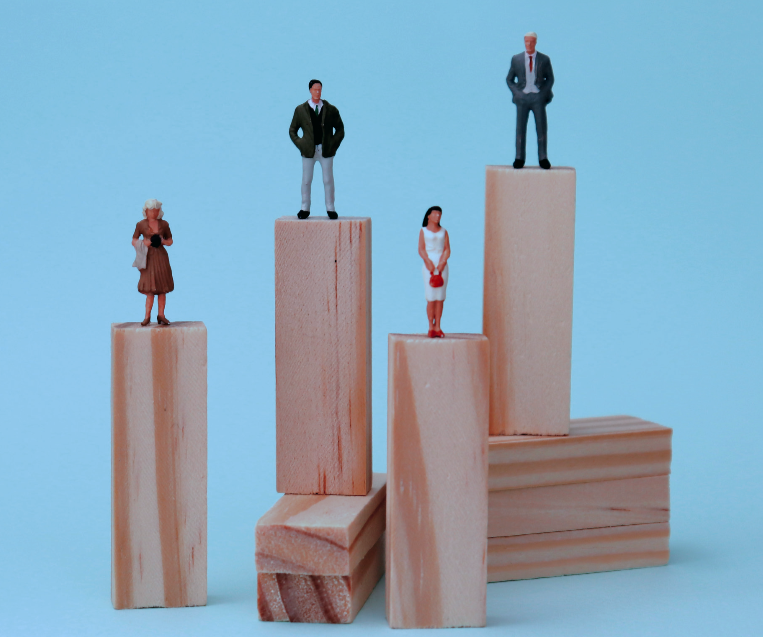
Does Economics Have a Problem with Women?
Read a summary using the INOMICS AI tool
Economics has a gender problem, it always has, and unfortunately, it appears to be getting worse. Until recently, the impression was that this historically male-dominated discipline was turning a corner—albeit rather slowly—and the number of women studying economics was creeping upwards. That progress, however, looks to have stalled, and by some accounts, including that of the Australian Department of Education, actually gone into reverse. All the while, the number of women in the STEM fields (Science, Technology, Engineering, and Maths)—long notorious for their poor gender ratios—has been steadily increasing. It looks as though the ‘old boys’ club’ of economics might be closing ranks.
In any field, such inequity would be troubling, but because of the role economics plays in our society—how much it informs public policy—the problem it poses is especially disturbing. While in power, mostly male politicians refer to mostly male economists to legitimise their policy programmes; male priorities derived from male experience are, in effect, trumping their female counterparts. This collaboration serves to imbue patriarchy into the legislation that structures our daily lives, hindering the achievement of gender equality.

To some, this may sound over the top, far-fetched even—but it isn’t. In fact, it’s borne out in the data. A recent a survey of members of the American Economic Association (AEA) revealed the extent to which male and female economists diverge in some fundamental areas. Perhaps most alarming is the split on the gender pay gap: only 14% of women said the gap was explained by differing educational qualifications and occupational choices, compared to 54% of men. Given men are advantaged by the gap it is awfully convenient for them to believe ‘superior’ education and ‘wiser’ decision-making accounts for it. In practice, such a discrepancy means the voices that need to be heard to fight the injustice are less audible, sometimes even ignored, and consequently the pay gap endures. For men, the issue remains a concern, but evidently nowhere near a priority—and unfortunately, they set the agenda.
Worryingly, divergence in opinion extends to other major policy areas too. Women, for example, are more likely to support greater wealth distribution, larger government size, and a higher minimum wage—initiatives generally considered to be especially beneficial for women. And therein lies the inhibiting pattern that pervades the discipline. Simply put, academics research areas in which they are already familiar and/or have personal connection/stand to gain from. The underrepresentation of women, therefore, inherently limits the variety of questions economists look at (a short-coming that applies, even more strikingly, to people of colour) and allows white male opinion to remain the governing opinion. This lack of diversity is unquestionably constraining the field’s intellectual development and stymieing its ability to bring about transformative change.
How bad is the situation?
The gender imbalance in economics begins with education and is then traceable at every stage of the economist’s career development—a phenomenon former chair of the Federal Reserve Janet Yellin calls the ‘the leaky pipeline’. While ascending the career ladder, women are met with ever-thicker glass ceilings, halting progress and in some cases, encouraging the abandonment of the profession altogether—the more senior the economist, the less likely it is a woman.
Economist and New York Times contributor, Justin Wolfers, has looked into the number of women majoring in economics at undergraduate level, and found that the proportion, having ‘peaked in the mid-to-late 1990s’, now stands at a paltry 35%, the same amount as in the early 1980s. This, too, is against a broader backdrop of women excelling across academia, comfortably earning the majority of completed undergraduate degrees.
Adhering to the pipeline logic, these numbers further dwindle at doctorate stage. In another study by the AEA, it was shown that at many of the top US universities less than one fifth of incoming economics doctoral students were women, with the share then completing their PhDs also falling. Enter the world of work and things get no better. A sobering illustration of the vocational restrictions women face can again be seen looking at universities. As noted by economist Heather Sarsons, ‘female economists are twice as likely to be denied tenure as the male colleagues’, and of the women who make it, only 29% then proceed to make full professorship after seven years. For men, this figure is almost double, standing at 56%. Donna Ginther, professor at the University of Kansas, has found that these occupational realities greatly inhibit female job satisfaction, their happiness in the workplace lagging far behind that experienced by men.
Why is economics such a bad egg?
The obvious next question is why? Why is economics failing to improve gender diversity when other male-dominated fields are making progress? Lack of female ability can be immediately dismissed, and not just for its flagrant misogyny. There is much evidence that actually points to women matching, and in numerous cases, outperforming men while still in the ‘pipeline’. In both the UK and US, for instance, women average better grades at undergraduate level, and while working are equally as prolific with regard to publication output. Instead, analysis—like for example that conducted by Amanda Bayer and Cecilia Rouse—suggests that a bias, both implicit and institutional, is the ‘more likely culprit’. Analysis in this area is growing, and has already uncovered a host of systematic barriers that women face. The list is dauntingly long.
As reported by The Economist's Data Team in 2018, investigation has shown that female economists are being held to a higher standard than their male counterparts, particularly when it comes to publishing. The demands made of their research are more rigorous: women experience an increased likelihood of requested rewrites, while the criticism levelled at their work is also much harsher. Together, these factors conspire to make publication a more time-consuming and onerous task. To add insult to injury, when work is co-authored with a man, research shows the female contributor receives significantly less peer credit than the male. Sarsons exposed the ubiquitous nature of this bias in a lengthy study based on publication data from the last 40 years. While acknowledging the ‘publish or perish’ culture that pervades academia and that much economic research is collaborative, Sarsons shows that the consequences of this bias severely damage women’s chances of tenure.
The gendered division of labour within economics helps to compound the above problems. As explained by Emmanuelle Auriol, once qualified, the focus of male and female economists tends to diverge along certain lines, women gravitating towards more people-oriented sub-fields like ‘labour, health and education’, while men are drawn to macroeconomics. She continues, asserting that editors and publishers—who predictably are mostly men—are often less accustomed to the sub-fields that women are more likely to represent, this relative ignorance reducing the chances of their publication. This lack of visibility, in turn, denies the sub-fields a certain level of respectability, tarnishing their academic prestige and potential utility.
Going forward
The marketplace of ideas has long been presumed an effective sieve, siphoning the good ideas from the bad, ensuring that quality research rises, like cream, to the top, making itself available for public use. By this logic the current state of publication would suggest that men are simply having better ideas. Instead, the problem is that the sieve is not working the way it should, and perhaps never has. It functions, rather, as a self-reinforcing, self-serving device that has only been effective in insulating the discipline from change, risking it becoming anachronistic.
For it to consider itself a true meritocracy the culture of economics needs upheaval—a process that should begin with its own investigative nous being turned in-house. Candid discussion of implicit biases must take place; high female dropout rates need thorough investigation; and clear descriptions of female contribution to co-authored pieces have to be guaranteed. Of course, these are mere starting points, the first repairs to an incredibly porous pipeline. Most important of all is that the work towards this renovation starts now.
-
- Corso online
- (Online)
- Posted 1 week ago
Python and Statistics for Financial Analysis
at Hong Kong University of Science and Technology and Coursera in Hong Kong SAR China
-
- Programma di Dottorato
- Posted 2 days ago
Graduate Program in Economics and Finance (GPEF) - Fully funded Ph.D. Positions
Starts 1 Sep at University of St.Gallen in Sankt Gallen, Svizzera
-
- Assistant Professor / Lecturer Job
- Posted 1 week ago
Clinical Assistant Professor in the Robert C. Vackar College of Business and Entrepreneurship/Economics
At University of Texas Rio Grande Valley in Edinburg, Stati Uniti














